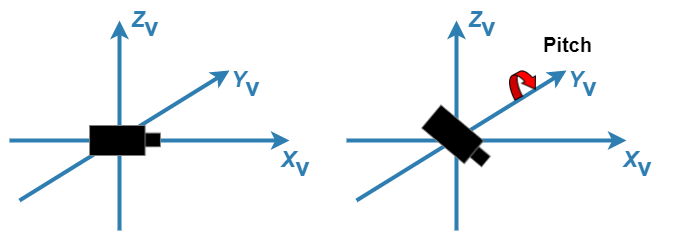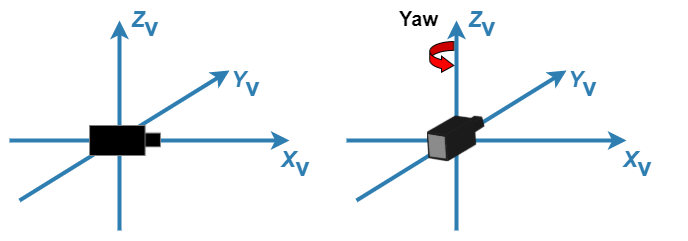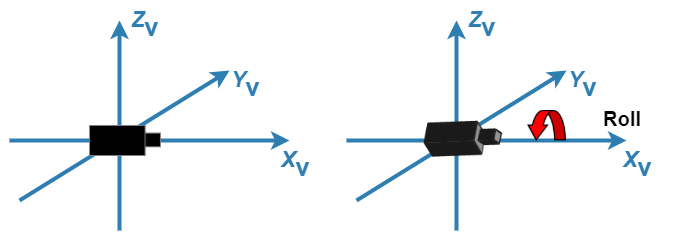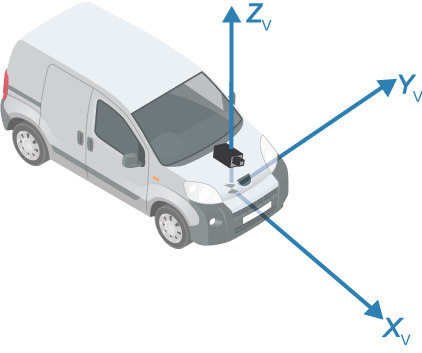estimateMonoCameraParameters
Estimate extrinsic monocular camera parameters using calibration pattern
Syntax
Description
[
estimates the extrinsic parameters of a monocular camera by using the intrinsic parameters
of the camera and a calibration pattern. The returned extrinsic parameters define the yaw,
pitch, and roll rotation angles between the camera
coordinate system and vehicle coordinate system
axes. The function also returns the height of the camera above the ground. Specify the
intrinsic parameters, the image and world coordinates of the calibration pattern key points,
and the height of the calibration pattern's origin above the ground. The calibration pattern
can be a checkerboard or a circle grid pattern.pitch,yaw,roll,height] = estimateMonoCameraParameters(intrinsics,imagePoints,worldPoints,patternOriginHeight)
By default, the function assumes that the camera is facing forward and that the calibration pattern is parallel with the ground. For all possible camera and calibration pattern placements, see Calibrate a Monocular Camera.
[
specifies options using one or more name-value pairs, in addition to the inputs and outputs
from the previous syntax. For example, you can specify the orientation or position of the
calibration pattern.pitch,yaw,roll,height] = estimateMonoCameraParameters(___,Name,Value)
Examples
Input Arguments
Name-Value Arguments
Output Arguments
More About
Version History
Introduced in R2018b
See Also
Apps
Functions
estimateCameraParameters|estimateFisheyeParameters|detectCheckerboardPoints|generateCheckerboardPoints|extrinsics












